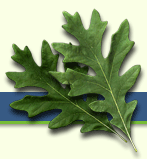In this assignment students are asked to integrate field, virtual and museum experiences. Students research on-line databases and resources, visit a natural history collection virtually and physically, and have a field experience where they explore a local plant community. Students are asked to formulate questions about biodiversity in their plant community that can be addressed using a combination of field, online databases and virtual resources. The “final product” will be a visually creative digital tour of a plant community framed in an interesting research question. The final product integrates and applies what was learned from background research and virtual databases with a field experience.
The goal is that after completing this series of exercises and experiences, students will be able to:
- Describe raw data available in physical natural history museums and on-line databases
- Compare types of information obtained from online and physical sources.
- Extract data from virtual resources and on-line databases and convert into meaningful information about the living world
- Apply information to a key issue related to scientific discovery, biology and the living world
- Appreciate the value of natural history collections in creating useful understanding of the living world around us.
For an example of a completed “digital journal” see the following webpage:Biodiversity through time -Baker Woodlot, a Beech Maple Forest on the Michigan State University Campus. You will see and embedded link to take a digital tour of Baker Woodlot using a place-based application being developed for smartphones (TourGuide). |

